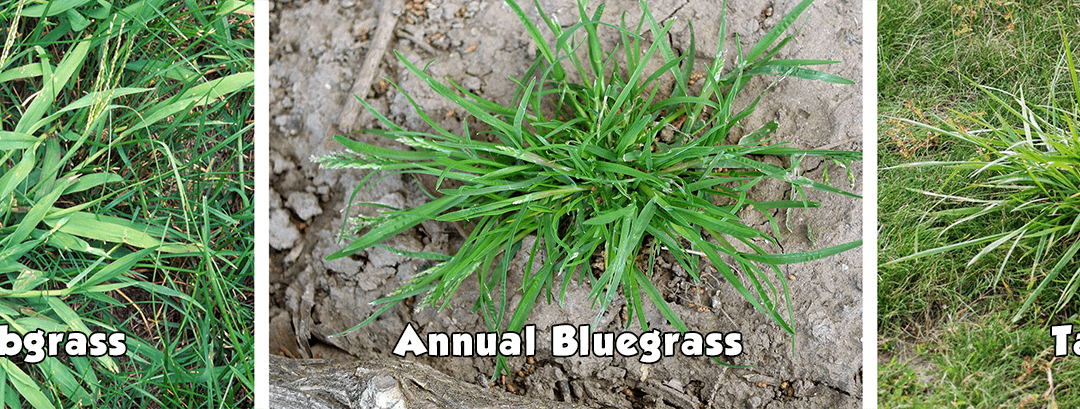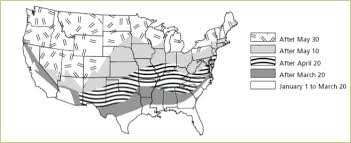At this time of year people are seeing “different” grasses in their landscapes – and they are usually unattractive. So, of course, they think it MUST be crabgrass. Then they start thinking that Green Side Up applied a pre-emergent already so why am I seeing it. Guess what? It isn’t crabgrass at all. It’s called poa annua or annual bluegrass. Annual Bluegrass grows in clumps like crabgrass, but it will show seed heads where crabgrass does not have seed heads. The blades of crabgrass are thicker than bluegrass.
When does crabgrass appear
But here is the problem: crabgrass is a summer annual weed that won’t be germinating through most of New Jersey until mid May and sometimes into June. This grass needs soil temperatures at 1 inch depth to be consistently around 55 F for a minimum of 48 hours for germination to occur. It is still a little early and chilly for it to begin growing. Unlike crabgrass, annual bluegrass starts germinating in late summer as the soil temperature drops below 70°F. If conditions are favorable, it will continue germinating throughout the winter and you will see it in your lawn in the spring.
The flowering of landscape plants can also be used as a good estimate of when crabgrass might be germinating. Many are aware that forsythia is traditionally considered a good plant to indicate that crabgrass will soon start germinating. Forsythia will be in full bloom prior to crabgrass germination and forsythia flowers will wither near crabgrass germination. Most think that crabgrass germinates when forsythia blooms, but this is false.
What does crabgrass look like
Crabgrass gets its name because it kind of looks like a crab. It has many legs (or in this case long branches/stems with pairs of leaf blades) and hugs the ground, making it difficult to mow or remove. Crabgrass loves thin and bare spots, so it will compete with and often beat out patchy areas around the yard where grass is weak or not growing at all. You will also find crabgrass growing out of cracks in the curb, driveway, sidewalk, and edges of your house. Typically, bright green while young and becoming darker as it grows, crabgrass gets off to an early start in the season. However, if ignored, it will continue to sprout, spread, and grow thick patches just about anywhere well into the hot summer months. Without rain or proper watering, your lawn will naturally thin out and prove more of an opportunity for crabgrass or other grassy weeds to attack. So it is wise to aerate and seed in the fall to help diminish crabgrass because aerating helps turf breath and simultaneous seeding continues to build a dense lawn of desirable grass.
Once mature, crabgrass will turn a reddish/purple color near the base, making it easy to distinguish this between other weeds and grasses.
How to prevent crabgrass
The most efficient way to prevent crabgrass is to create healthy, dense turf. Treating crabgrass begins with a quality pre-emergent. Pre-emergents work by inhibiting seed germination and root development so that seeds can’t become established plants. Green Side Up will apply the pre-emergent at the appropriate time of the year to create a barrier. Fight crabgrass most effectively by shading it out with a thick, healthy lawn. A thick lawn provides a dark canopy of grass blades over the seeds so they won’t sprout. Lawns in New Jersey should be aerated and seeded in the fall when conditions are ideal.
If you are having trouble with controlling crabgrass, give us a call. We will be happy to help.


